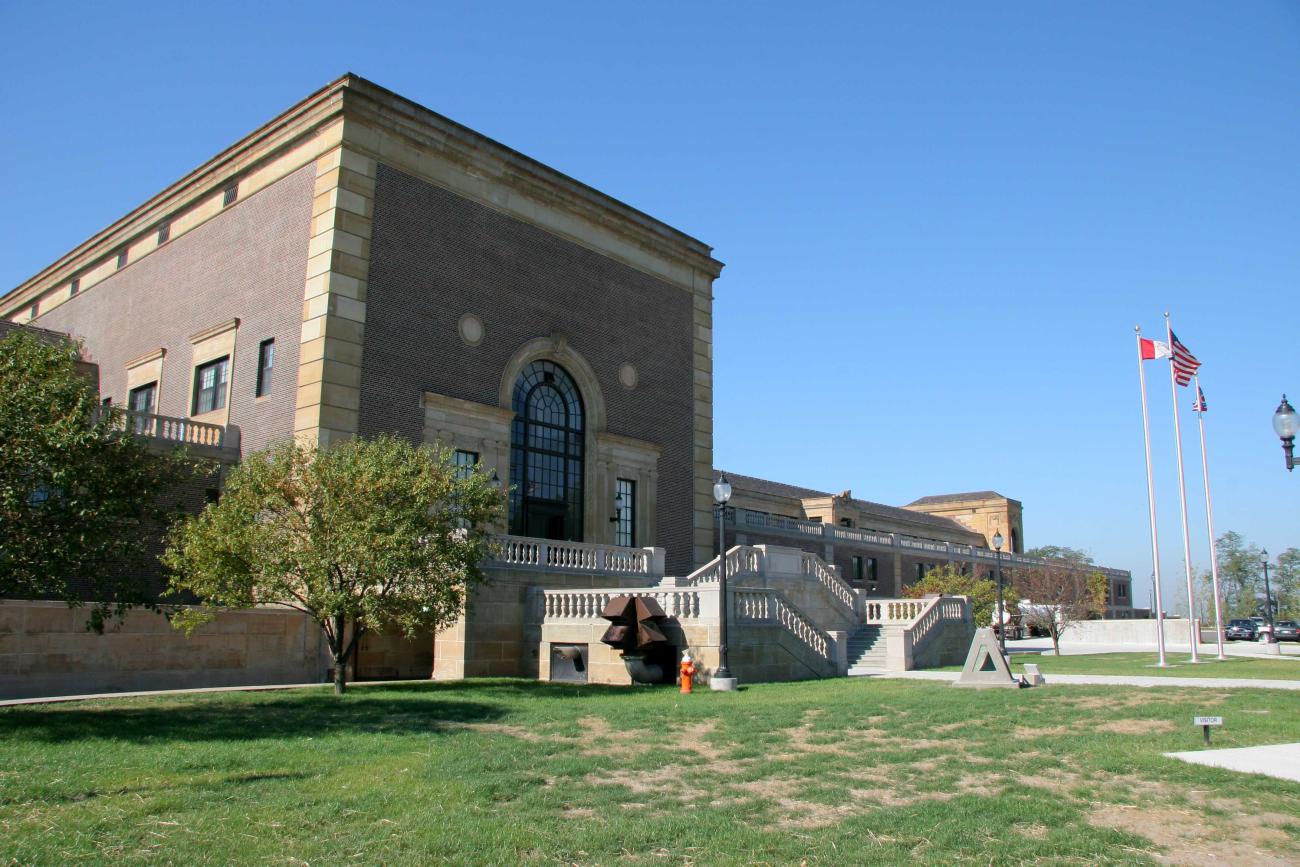Baldwin Water Treatment Plant
The Baldwin Water Treatment Plant is located in the University Circle/Fairfax neighborhood. Put into service in 1925, it produces an average 70 million gallons daily (MGD) of drinking water that supplies the residents and businesses located in downtown, University Circle, the east side of Cleveland, and the eastern and southeastern suburbs.
Baldwin includes Cleveland Water’s only visible raw water intake crib (the 5-mile crib), the Kirtland Pump Station along South Marginal Road, a 750-foot long Palladian-style filtration building at the intersection of Stokes Blvd. and Martin Luther King Jr. Dr., a 130-million-gallon finished water reservoir, and the Fairmount Pump Station.
From 1885 to 1925, the plant property was the site of the 80-million-gallon Fairmount Reservoir and Pump Station, which delivered unfiltered water to customers. From 1885 to 1904, the original Division Avenue Pump Station pumped water to Fairmount Reservoir.
In 1896, to meet the growing city’s needs, construction began on a 9-foot diameter hand-laid brick tunnel that would extend 5 miles offshore and 50 feet below the bed of Lake Erie to a new water intake crib. The 5-mile crib and the tunnel would supply the Kirtland Pump Station and another 4.5 miles of mains would connect Kirtland to the Fairmount Reservoir. These structures went into service in 1904.
In the early 1920s, construction began on the current Baldwin Filtration Plant and Reservoir, which was designed by architect Herman Kregelius and named after the road that used to bisect the property. At the time, the Baldwin Reservoir was the largest covered reservoir in the world.
With the completion of the Baldwin Reservoir, the Fairmount Reservoir basins were used to hold water before it entered Baldwin’s treatment process until 1985. In 1985, the north basin was converted into a residuals holding facility. Since 1990, raw water has been pumped directly from Kirtland to Baldwin for treatment. After plant upgrades in 2009, the south basin was filled.
The original 1904 Kirtland Pump Station was reconstructed in the late 1920s and was completely rebuilt in 1968. The original 1885 Fairmount Pump Station was replaced in January 1926 with the current Fairmount Pump Station, which sends water to second and third high service areas.
Baldwin underwent $195.5 million in major renovations as part of the Plant Enhancement Program. Some of the key upgrades include: rehabilitating the filter system, building a new chemical system, renovating the residual system and the administration building, rehabilitating the Kirtland raw water pump station, installation of a computer control system that automated the pump stations, the installation of two new Second High Service pumps at Fairmount, the replacement of two pumps at Kirtland, and the addition of a de-chlorination system to treat water from the finished water reservoir underdrains.

